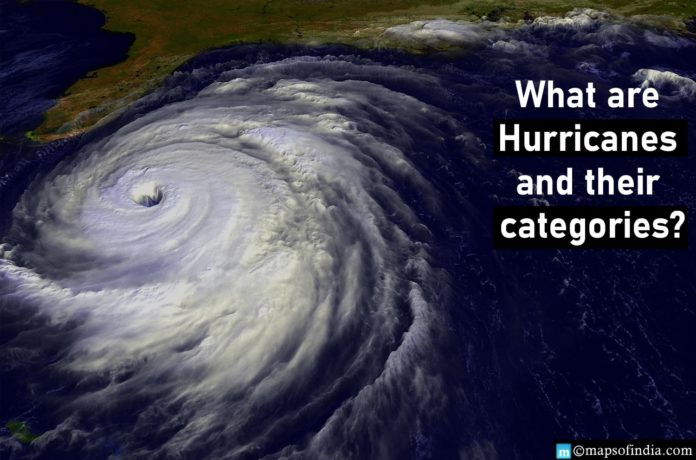Hurricanes are enormous storms, commonly known as tropical cyclones, which carry a rotating speed of 74 miles per hour around an area containing low pressure and resulting in heavy rain. It is accompanied by thunder, lightning as sometimes it moves into temperature latitudes.
Tropical cyclones have different names at different places. For instance, In North America and the Caribbean, they are called “hurricanes”, in the Indian Ocean and Bay of Bengal, they are called “cyclones”, and in Southeast Asia, they are known as “typhoons.” Therefore, as per the geographical position, the storm’s name depends accordingly.
Formation of Hurricanes
Hurricanes form above the warm ocean water of the tropics in areas adjoining the equator. When warm moist air over the water increases, the cooler air takes place. The cooler air will warm and begin to rise. This cycle leads to the formation of enormous storm clouds. These storm clouds will start to rotate with the earth’s spin, creating a collective system. If there is enough warm water, the cycle doesn’t stop, while the heavy clouds and strong wind will continue causing a hurricane to form then.
Following are the categories of Hurricanes with their speed limits and consequences:
Category 1 (74 mph to 95 mph): These are the risky winds that can damage homes and trees in the area.
Category 2 (96 mph to 110 mph): These are intense, dangerous winds leading to extensive destruction to homes, trees and roads, often outcomes in near-total power loss for numerous days to weeks.
Category 3 (111 mph to 129 mph): The catastrophic damage to homes, trees and roads. Electricity and water are frequently cut off for several days to weeks.
Category 4 (130 mph to 156 mph): Extreme damage to homes, trees and power infrastructure. Most places become unsuitable for living and with no power for weeks or months.
Category 5 (157 mph and higher): Most homes and other lay-outs get ruined. Most areas are unsuitable for living and with no power and water for weeks or months.
Hurricanes can span more than 600 miles and are measurable from one angle to the other. The heavy clouds that enable hurricanes can become tall when it comes to height. An intense storm can reach nine miles into the surroundings of an environment.
They can create annihilation with high-speed winds that can make trees fall trees and ruin homes by disrupting people’s lives. Also, many hurricanes develop numerous small tornados.
Due to the Coriolis effect, which is the earth’s rotation, tropical cyclones rotate anti-clockwise in the northern hemisphere and clockwise in the southern hemisphere. As a result, weather predictors make a cone demonstrating the next travel spot of the hurricane.
Hurricanes occur from June to October over the Western Pacific, and in the Atlantic, from June to November. According to the speed of sustained winds, Tropical Depression has 38 mph or less while Tropical Storm has 39 to 73 mph.
India saw two cyclones, namely Tauktae and Yaas, this year. Tauktae claimed the lives of 12 people in Maharashtra, 8 in Karnataka and 4 in Gujarat. Last year, in 2020, Amphan and Nisarga took place. The Indian Meteorological Department states that India could witness more cyclones before monsoons in upcoming years.
Cyclones ravage a particular place, and the National Disaster Management Authority helps in evacuation and rehabilitation process. The governments in different states focus on the planning and strategy to tackle the crisis, while IMD issues early warnings and updates.




